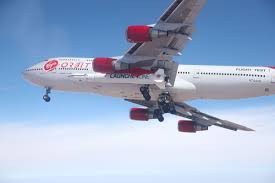
Breaking News
DRINK 1 CUP Before Bed for a Smaller Waist
 Nano-magnets may defeat bone cancer and help you heal
Nano-magnets may defeat bone cancer and help you heal
 Dan Bongino Officially Leaves FBI After One-Year Tenure, Says Time at the Bureau Was...
Dan Bongino Officially Leaves FBI After One-Year Tenure, Says Time at the Bureau Was...
 WATCH: Maduro Speaks as He's Perp Walked Through DEA Headquarters in New York
WATCH: Maduro Speaks as He's Perp Walked Through DEA Headquarters in New York
Top Tech News
 Laser weapons go mobile on US Army small vehicles
Laser weapons go mobile on US Army small vehicles
 EngineAI T800: Born to Disrupt! #EngineAI #robotics #newtechnology #newproduct
EngineAI T800: Born to Disrupt! #EngineAI #robotics #newtechnology #newproduct
 This Silicon Anode Breakthrough Could Mark A Turning Point For EV Batteries [Update]
This Silicon Anode Breakthrough Could Mark A Turning Point For EV Batteries [Update]
 Travel gadget promises to dry and iron your clothes – totally hands-free
Travel gadget promises to dry and iron your clothes – totally hands-free
 Perfect Aircrete, Kitchen Ingredients.
Perfect Aircrete, Kitchen Ingredients.
 Futuristic pixel-raising display lets you feel what's onscreen
Futuristic pixel-raising display lets you feel what's onscreen
 Cutting-Edge Facility Generates Pure Water and Hydrogen Fuel from Seawater for Mere Pennies
Cutting-Edge Facility Generates Pure Water and Hydrogen Fuel from Seawater for Mere Pennies
 This tiny dev board is packed with features for ambitious makers
This tiny dev board is packed with features for ambitious makers
 Scientists Discover Gel to Regrow Tooth Enamel
Scientists Discover Gel to Regrow Tooth Enamel
 Vitamin C and Dandelion Root Killing Cancer Cells -- as Former CDC Director Calls for COVID-19...
Vitamin C and Dandelion Root Killing Cancer Cells -- as Former CDC Director Calls for COVID-19...
Virgin Orbit's "flying launchpad" completes first captive carry flight

Virgin Orbit's Cosmic Girl took to the skies over Southern California on November 18, 2018 carrying a 70-ft-long (21-m) rocket for the first time. The specially modified 747-400 "flying launchpad" with the LauncherOne small-satellite booster under its port wing took off from Victorville, California on an 80-minute test flight designed to assess the take-off, landing, and low-speed handling and performance of the integrated aircraft and carbon-fiber two-stage rocket.
According to Virgin Orbit, Sunday's test flight by Sir Richard Branson's small satellite launch company was the first in a series leading up to an actual orbital launch early next year. Virgin Orbit CEO Dan Hart called it "a picture-perfect flight, and a major step forward in our quest to bring a new capability to small satellite launch."
The modified passenger aircraft and its rocket cargo are scheduled to carry out more tests over the coming months to gather more flight data on how well the mated systems work, as well as the robustness of the liquid-fueled rocket's composite design, avionics, and onboard computers. This will culminate in a dead-drop of the rocket without its engine firing to provide additional flight data during free fall. After its initial launch mission, Virgin Orbit plans to carry out several launches per year.



